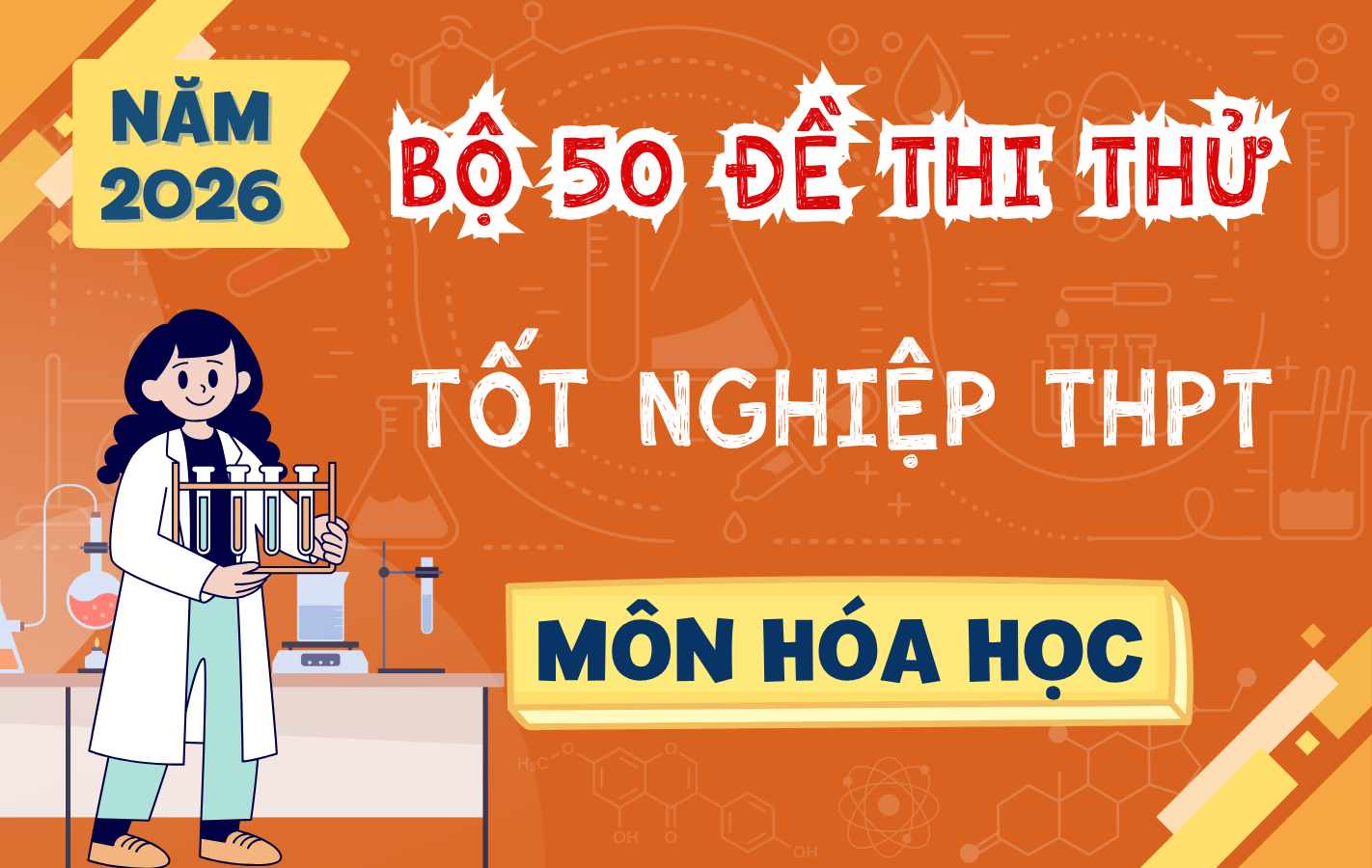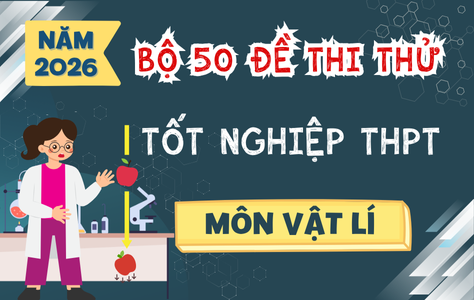Câu hỏi:
Read the following passage about inventions and mark the letter A, B, C, or D on your answer sheet to indicate the best answer to each of the following questions from 31 to 40.
A large number of inventions require years of arduous research and development before they are perfected. For instance, Thomas Edison made more than 1,000 attempts before successfully inventing the incandescent light bulb. (I) History is replete with examples of inventors failing repeatedly before eventually succeeding. (II) However, not all inventions are the result of relentless effort. (III) Indeed, some inventions come about entirely by accident, often when inventors are attempting to create something else. (IV) These accidental discoveries have profoundly impacted the world, proving that innovation sometimes relies as much on luck as on determination.
In the 1930s, chemist Roy Plunkett was trying to create a new substance for refrigeration. He mixed chemicals, placed them in a pressurized container, and cooled the mixture. The result was not a refrigeration material but Teflon, a substance now widely used to make nonstick cookware. Decades earlier, John Pemberton, a pharmacist in Atlanta, sought to create a tonic to relieve headaches. Though unsuccessful in his original goal, he inadvertently invented Coca-Cola, which became one of the most popular beverages in the world. Both Plunkett and Pemberton demonstrate how unintended outcomes can lead to groundbreaking products.
Accidental discoveries have also played a critical role in scientific advancements. In 1928, Alexander Fleming discovered penicillin, the first antibiotic, when he noticed that mold in a petri dish killed surrounding bacteria. This groundbreaking discovery has saved millions of lives and revolutionized medicine. Similarly, in 1946, Percy Spencer was experimenting with microwaves when he realized that a candy bar in his pocket had melted. Investigating further, he developed the microwave oven, a device that forever changed the way people prepare food.
These stories highlight the unpredictable nature of innovation. While persistence and hard work are often necessary, chance can also play an important role in shaping the modern world. Whether through deliberate effort or serendipity, accidental inventions have transformed industries, improved daily life, and opened new possibilities for the future.
The word "they" in paragraph 1 refers to:
Đáp án đúng: A
Đáp án đúng là A
Giải thích:
Đại từ "they" ở đây ám chỉ "inventions" trong câu trước đó: " A large number of inventions require years of arduous research and development before they are perfected..."
Câu hỏi này thuộc đề thi trắc nghiệm dưới đây, bấm vào Bắt đầu thi để làm toàn bài
Bộ đề thi giúp học sinh lớp 12 làm quen với cấu trúc và nội dung đề thi tốt nghiệp THPT môn Tiếng Anh năm 2025. Đề thi được xây dựng theo định hướng của Bộ GD ĐT, bao gồm các phần Ngữ âm, Từ vựng - Ngữ pháp, Chức năng giao tiếp, Kỹ năng đọc hiểu, Kỹ năng viết và Phát âm - Trọng âm. Hệ thống câu hỏi đa dạng, bám sát chương trình học, giúp học sinh rèn luyện kỹ năng làm bài và nâng cao tư duy ngôn ngữ. Đáp án chi tiết đi kèm hỗ trợ học sinh tự ôn tập, đánh giá năng lực và chuẩn bị tốt nhất cho kỳ thi quan trọng.
Câu hỏi liên quan
Read the following passage about inventions and mark the letter A, B, C, or D on your answer sheet to indicate the best answer to each of the following questions from 31 to 40.
A large number of inventions require years of arduous research and development before they are perfected. For instance, Thomas Edison made more than 1,000 attempts before successfully inventing the incandescent light bulb. (I) History is replete with examples of inventors failing repeatedly before eventually succeeding. (II) However, not all inventions are the result of relentless effort. (III) Indeed, some inventions come about entirely by accident, often when inventors are attempting to create something else. (IV) These accidental discoveries have profoundly impacted the world, proving that innovation sometimes relies as much on luck as on determination.
In the 1930s, chemist Roy Plunkett was trying to create a new substance for refrigeration. He mixed chemicals, placed them in a pressurized container, and cooled the mixture. The result was not a refrigeration material but Teflon, a substance now widely used to make nonstick cookware. Decades earlier, John Pemberton, a pharmacist in Atlanta, sought to create a tonic to relieve headaches. Though unsuccessful in his original goal, he inadvertently invented Coca-Cola, which became one of the most popular beverages in the world. Both Plunkett and Pemberton demonstrate how unintended outcomes can lead to groundbreaking products.
Accidental discoveries have also played a critical role in scientific advancements. In 1928, Alexander Fleming discovered penicillin, the first antibiotic, when he noticed that mold in a petri dish killed surrounding bacteria. This groundbreaking discovery has saved millions of lives and revolutionized medicine. Similarly, in 1946, Percy Spencer was experimenting with microwaves when he realized that a candy bar in his pocket had melted. Investigating further, he developed the microwave oven, a device that forever changed the way people prepare food.
These stories highlight the unpredictable nature of innovation. While persistence and hard work are often necessary, chance can also play an important role in shaping the modern world. Whether through deliberate effort or serendipity, accidental inventions have transformed industries, improved daily life, and opened new possibilities for the future.
Where in paragraph 1 does the following sentence best fit?
“Instead, some inventions are the result of spontaneous, unintended incidents.”
Đáp án đúng là C
Giải thích:
Câu này nói về việc một số phát minh xảy ra do các sự kiện bất ngờ, không có chủ đích. Câu này phù hợp để đặt ngay trước câu "[III] Indeed, some inventions come about entirely by accident..." để làm rõ ý nghĩa và tạo sự liên kết chặt chẽ.
Read the following passage about inventions and mark the letter A, B, C, or D on your answer sheet to indicate the best answer to each of the following questions from 31 to 40.
A large number of inventions require years of arduous research and development before they are perfected. For instance, Thomas Edison made more than 1,000 attempts before successfully inventing the incandescent light bulb. (I) History is replete with examples of inventors failing repeatedly before eventually succeeding. (II) However, not all inventions are the result of relentless effort. (III) Indeed, some inventions come about entirely by accident, often when inventors are attempting to create something else. (IV) These accidental discoveries have profoundly impacted the world, proving that innovation sometimes relies as much on luck as on determination.
In the 1930s, chemist Roy Plunkett was trying to create a new substance for refrigeration. He mixed chemicals, placed them in a pressurized container, and cooled the mixture. The result was not a refrigeration material but Teflon, a substance now widely used to make nonstick cookware. Decades earlier, John Pemberton, a pharmacist in Atlanta, sought to create a tonic to relieve headaches. Though unsuccessful in his original goal, he inadvertently invented Coca-Cola, which became one of the most popular beverages in the world. Both Plunkett and Pemberton demonstrate how unintended outcomes can lead to groundbreaking products.
Accidental discoveries have also played a critical role in scientific advancements. In 1928, Alexander Fleming discovered penicillin, the first antibiotic, when he noticed that mold in a petri dish killed surrounding bacteria. This groundbreaking discovery has saved millions of lives and revolutionized medicine. Similarly, in 1946, Percy Spencer was experimenting with microwaves when he realized that a candy bar in his pocket had melted. Investigating further, he developed the microwave oven, a device that forever changed the way people prepare food.
These stories highlight the unpredictable nature of innovation. While persistence and hard work are often necessary, chance can also play an important role in shaping the modern world. Whether through deliberate effort or serendipity, accidental inventions have transformed industries, improved daily life, and opened new possibilities for the future.
The phrase "come about" in paragraph 1 could best be replaced by:
Đáp án đúng là B
Giải thích:
"Come about" nghĩa là "xảy ra." Trong ngữ cảnh này, "take place" là từ đồng nghĩa phù hợp nhất.
Read the following passage about inventions and mark the letter A, B, C, or D on your answer sheet to indicate the best answer to each of the following questions from 31 to 40.
A large number of inventions require years of arduous research and development before they are perfected. For instance, Thomas Edison made more than 1,000 attempts before successfully inventing the incandescent light bulb. (I) History is replete with examples of inventors failing repeatedly before eventually succeeding. (II) However, not all inventions are the result of relentless effort. (III) Indeed, some inventions come about entirely by accident, often when inventors are attempting to create something else. (IV) These accidental discoveries have profoundly impacted the world, proving that innovation sometimes relies as much on luck as on determination.
In the 1930s, chemist Roy Plunkett was trying to create a new substance for refrigeration. He mixed chemicals, placed them in a pressurized container, and cooled the mixture. The result was not a refrigeration material but Teflon, a substance now widely used to make nonstick cookware. Decades earlier, John Pemberton, a pharmacist in Atlanta, sought to create a tonic to relieve headaches. Though unsuccessful in his original goal, he inadvertently invented Coca-Cola, which became one of the most popular beverages in the world. Both Plunkett and Pemberton demonstrate how unintended outcomes can lead to groundbreaking products.
Accidental discoveries have also played a critical role in scientific advancements. In 1928, Alexander Fleming discovered penicillin, the first antibiotic, when he noticed that mold in a petri dish killed surrounding bacteria. This groundbreaking discovery has saved millions of lives and revolutionized medicine. Similarly, in 1946, Percy Spencer was experimenting with microwaves when he realized that a candy bar in his pocket had melted. Investigating further, he developed the microwave oven, a device that forever changed the way people prepare food.
These stories highlight the unpredictable nature of innovation. While persistence and hard work are often necessary, chance can also play an important role in shaping the modern world. Whether through deliberate effort or serendipity, accidental inventions have transformed industries, improved daily life, and opened new possibilities for the future.
Which of the following is NOT an invention made by accident, according to the passage?
Đáp án đúng là D
Giải thích:
Giải thích:
Trong đoạn văn, bóng đèn sợi đốt (incandescent light bulb) là kết quả của nhiều nỗ lực kiên trì từ Thomas Edison, không phải một phát minh tình cờ. Các lựa chọn khác đều là các phát minh ngẫu nhiên được nhắc đến trong bài.
Read the following passage about inventions and mark the letter A, B, C, or D on your answer sheet to indicate the best answer to each of the following questions from 31 to 40.
A large number of inventions require years of arduous research and development before they are perfected. For instance, Thomas Edison made more than 1,000 attempts before successfully inventing the incandescent light bulb. (I) History is replete with examples of inventors failing repeatedly before eventually succeeding. (II) However, not all inventions are the result of relentless effort. (III) Indeed, some inventions come about entirely by accident, often when inventors are attempting to create something else. (IV) These accidental discoveries have profoundly impacted the world, proving that innovation sometimes relies as much on luck as on determination.
In the 1930s, chemist Roy Plunkett was trying to create a new substance for refrigeration. He mixed chemicals, placed them in a pressurized container, and cooled the mixture. The result was not a refrigeration material but Teflon, a substance now widely used to make nonstick cookware. Decades earlier, John Pemberton, a pharmacist in Atlanta, sought to create a tonic to relieve headaches. Though unsuccessful in his original goal, he inadvertently invented Coca-Cola, which became one of the most popular beverages in the world. Both Plunkett and Pemberton demonstrate how unintended outcomes can lead to groundbreaking products.
Accidental discoveries have also played a critical role in scientific advancements. In 1928, Alexander Fleming discovered penicillin, the first antibiotic, when he noticed that mold in a petri dish killed surrounding bacteria. This groundbreaking discovery has saved millions of lives and revolutionized medicine. Similarly, in 1946, Percy Spencer was experimenting with microwaves when he realized that a candy bar in his pocket had melted. Investigating further, he developed the microwave oven, a device that forever changed the way people prepare food.
These stories highlight the unpredictable nature of innovation. While persistence and hard work are often necessary, chance can also play an important role in shaping the modern world. Whether through deliberate effort or serendipity, accidental inventions have transformed industries, improved daily life, and opened new possibilities for the future.
Which of the following is OPPOSITE in meaning to the word " inadvertently " in paragraph 2?
Đáp án đúng là A
Giải thích:
"Inadvertently" nghĩa là "vô tình." Từ trái nghĩa là "deliberately" (cố ý).
Read the following passage about inventions and mark the letter A, B, C, or D on your answer sheet to indicate the best answer to each of the following questions from 31 to 40.
A large number of inventions require years of arduous research and development before they are perfected. For instance, Thomas Edison made more than 1,000 attempts before successfully inventing the incandescent light bulb. (I) History is replete with examples of inventors failing repeatedly before eventually succeeding. (II) However, not all inventions are the result of relentless effort. (III) Indeed, some inventions come about entirely by accident, often when inventors are attempting to create something else. (IV) These accidental discoveries have profoundly impacted the world, proving that innovation sometimes relies as much on luck as on determination.
In the 1930s, chemist Roy Plunkett was trying to create a new substance for refrigeration. He mixed chemicals, placed them in a pressurized container, and cooled the mixture. The result was not a refrigeration material but Teflon, a substance now widely used to make nonstick cookware. Decades earlier, John Pemberton, a pharmacist in Atlanta, sought to create a tonic to relieve headaches. Though unsuccessful in his original goal, he inadvertently invented Coca-Cola, which became one of the most popular beverages in the world. Both Plunkett and Pemberton demonstrate how unintended outcomes can lead to groundbreaking products.
Accidental discoveries have also played a critical role in scientific advancements. In 1928, Alexander Fleming discovered penicillin, the first antibiotic, when he noticed that mold in a petri dish killed surrounding bacteria. This groundbreaking discovery has saved millions of lives and revolutionized medicine. Similarly, in 1946, Percy Spencer was experimenting with microwaves when he realized that a candy bar in his pocket had melted. Investigating further, he developed the microwave oven, a device that forever changed the way people prepare food.
These stories highlight the unpredictable nature of innovation. While persistence and hard work are often necessary, chance can also play an important role in shaping the modern world. Whether through deliberate effort or serendipity, accidental inventions have transformed industries, improved daily life, and opened new possibilities for the future.
Which of the following best summarizes paragraph 3?
Đáp án đúng là B
Giải thích:
Đoạn 3 tập trung vào các phát minh tình cờ (penicillin, lò vi sóng) và cách chúng mang lại bước tiến quan trọng. Đáp án B phản ánh ý chính này.
Read the following passage about inventions and mark the letter A, B, C, or D on your answer sheet to indicate the best answer to each of the following questions from 31 to 40.
A large number of inventions require years of arduous research and development before they are perfected. For instance, Thomas Edison made more than 1,000 attempts before successfully inventing the incandescent light bulb. (I) History is replete with examples of inventors failing repeatedly before eventually succeeding. (II) However, not all inventions are the result of relentless effort. (III) Indeed, some inventions come about entirely by accident, often when inventors are attempting to create something else. (IV) These accidental discoveries have profoundly impacted the world, proving that innovation sometimes relies as much on luck as on determination.
In the 1930s, chemist Roy Plunkett was trying to create a new substance for refrigeration. He mixed chemicals, placed them in a pressurized container, and cooled the mixture. The result was not a refrigeration material but Teflon, a substance now widely used to make nonstick cookware. Decades earlier, John Pemberton, a pharmacist in Atlanta, sought to create a tonic to relieve headaches. Though unsuccessful in his original goal, he inadvertently invented Coca-Cola, which became one of the most popular beverages in the world. Both Plunkett and Pemberton demonstrate how unintended outcomes can lead to groundbreaking products.
Accidental discoveries have also played a critical role in scientific advancements. In 1928, Alexander Fleming discovered penicillin, the first antibiotic, when he noticed that mold in a petri dish killed surrounding bacteria. This groundbreaking discovery has saved millions of lives and revolutionized medicine. Similarly, in 1946, Percy Spencer was experimenting with microwaves when he realized that a candy bar in his pocket had melted. Investigating further, he developed the microwave oven, a device that forever changed the way people prepare food.
These stories highlight the unpredictable nature of innovation. While persistence and hard work are often necessary, chance can also play an important role in shaping the modern world. Whether through deliberate effort or serendipity, accidental inventions have transformed industries, improved daily life, and opened new possibilities for the future.
According to the passage, which of the following statements is TRUE?
Read the following passage about inventions and mark the letter A, B, C, or D on your answer sheet to indicate the best answer to each of the following questions from 31 to 40.
A large number of inventions require years of arduous research and development before they are perfected. For instance, Thomas Edison made more than 1,000 attempts before successfully inventing the incandescent light bulb. (I) History is replete with examples of inventors failing repeatedly before eventually succeeding. (II) However, not all inventions are the result of relentless effort. (III) Indeed, some inventions come about entirely by accident, often when inventors are attempting to create something else. (IV) These accidental discoveries have profoundly impacted the world, proving that innovation sometimes relies as much on luck as on determination.
In the 1930s, chemist Roy Plunkett was trying to create a new substance for refrigeration. He mixed chemicals, placed them in a pressurized container, and cooled the mixture. The result was not a refrigeration material but Teflon, a substance now widely used to make nonstick cookware. Decades earlier, John Pemberton, a pharmacist in Atlanta, sought to create a tonic to relieve headaches. Though unsuccessful in his original goal, he inadvertently invented Coca-Cola, which became one of the most popular beverages in the world. Both Plunkett and Pemberton demonstrate how unintended outcomes can lead to groundbreaking products.
Accidental discoveries have also played a critical role in scientific advancements. In 1928, Alexander Fleming discovered penicillin, the first antibiotic, when he noticed that mold in a petri dish killed surrounding bacteria. This groundbreaking discovery has saved millions of lives and revolutionized medicine. Similarly, in 1946, Percy Spencer was experimenting with microwaves when he realized that a candy bar in his pocket had melted. Investigating further, he developed the microwave oven, a device that forever changed the way people prepare food.
These stories highlight the unpredictable nature of innovation. While persistence and hard work are often necessary, chance can also play an important role in shaping the modern world. Whether through deliberate effort or serendipity, accidental inventions have transformed industries, improved daily life, and opened new possibilities for the future.
Which of the following best paraphrases the underlined sentence in paragraph 4?
Read the following passage about inventions and mark the letter A, B, C, or D on your answer sheet to indicate the best answer to each of the following questions from 31 to 40.
A large number of inventions require years of arduous research and development before they are perfected. For instance, Thomas Edison made more than 1,000 attempts before successfully inventing the incandescent light bulb. (I) History is replete with examples of inventors failing repeatedly before eventually succeeding. (II) However, not all inventions are the result of relentless effort. (III) Indeed, some inventions come about entirely by accident, often when inventors are attempting to create something else. (IV) These accidental discoveries have profoundly impacted the world, proving that innovation sometimes relies as much on luck as on determination.
In the 1930s, chemist Roy Plunkett was trying to create a new substance for refrigeration. He mixed chemicals, placed them in a pressurized container, and cooled the mixture. The result was not a refrigeration material but Teflon, a substance now widely used to make nonstick cookware. Decades earlier, John Pemberton, a pharmacist in Atlanta, sought to create a tonic to relieve headaches. Though unsuccessful in his original goal, he inadvertently invented Coca-Cola, which became one of the most popular beverages in the world. Both Plunkett and Pemberton demonstrate how unintended outcomes can lead to groundbreaking products.
Accidental discoveries have also played a critical role in scientific advancements. In 1928, Alexander Fleming discovered penicillin, the first antibiotic, when he noticed that mold in a petri dish killed surrounding bacteria. This groundbreaking discovery has saved millions of lives and revolutionized medicine. Similarly, in 1946, Percy Spencer was experimenting with microwaves when he realized that a candy bar in his pocket had melted. Investigating further, he developed the microwave oven, a device that forever changed the way people prepare food.
These stories highlight the unpredictable nature of innovation. While persistence and hard work are often necessary, chance can also play an important role in shaping the modern world. Whether through deliberate effort or serendipity, accidental inventions have transformed industries, improved daily life, and opened new possibilities for the future.
Which of the following can be inferred from the passage?
Read the following passage about inventions and mark the letter A, B, C, or D on your answer sheet to indicate the best answer to each of the following questions from 31 to 40.
A large number of inventions require years of arduous research and development before they are perfected. For instance, Thomas Edison made more than 1,000 attempts before successfully inventing the incandescent light bulb. (I) History is replete with examples of inventors failing repeatedly before eventually succeeding. (II) However, not all inventions are the result of relentless effort. (III) Indeed, some inventions come about entirely by accident, often when inventors are attempting to create something else. (IV) These accidental discoveries have profoundly impacted the world, proving that innovation sometimes relies as much on luck as on determination.
In the 1930s, chemist Roy Plunkett was trying to create a new substance for refrigeration. He mixed chemicals, placed them in a pressurized container, and cooled the mixture. The result was not a refrigeration material but Teflon, a substance now widely used to make nonstick cookware. Decades earlier, John Pemberton, a pharmacist in Atlanta, sought to create a tonic to relieve headaches. Though unsuccessful in his original goal, he inadvertently invented Coca-Cola, which became one of the most popular beverages in the world. Both Plunkett and Pemberton demonstrate how unintended outcomes can lead to groundbreaking products.
Accidental discoveries have also played a critical role in scientific advancements. In 1928, Alexander Fleming discovered penicillin, the first antibiotic, when he noticed that mold in a petri dish killed surrounding bacteria. This groundbreaking discovery has saved millions of lives and revolutionized medicine. Similarly, in 1946, Percy Spencer was experimenting with microwaves when he realized that a candy bar in his pocket had melted. Investigating further, he developed the microwave oven, a device that forever changed the way people prepare food.
These stories highlight the unpredictable nature of innovation. While persistence and hard work are often necessary, chance can also play an important role in shaping the modern world. Whether through deliberate effort or serendipity, accidental inventions have transformed industries, improved daily life, and opened new possibilities for the future.
Which of the following best summarizes the main point of the passage?
Read the following advertisement and mark the letter A, B, C, or D on your answer sheet to indicate the option that best fits each of the numbered blanks from 1 to 6.
Join Our Team at Viet Organic Garden Restaurant!
Are you looking for a flexible part-time job that won’t interfere (1)______your studies? Viet Organic Garden Restaurant is (2)______a commitment to support students and young individuals who are eager to gain experience in the dynamic food service industry.
We’re currently offering weekend positions for dedicated, hardworking individuals. Each server will work 12 hours over the weekend—six hours on Saturday and six on Sunday. No prior experience? No problem! Our team is dedicated (3)______with and training you. Those (4)______will be supervised by our head server, ensuring they gain valuable skills and confidence.
Your responsibilities will include greeting customers, guiding them to their tables, presenting menu options, taking orders, and serving meals with care. You’ll also handle payments and ensure customers have a/an(5)______. Strong communication, a friendly attitude, and good maths skills are key!
If you’re a 12th grader, university student, or (6)______and seeking opportunities to grow in a supportive industrial setting, don’t wait! Submit your application letter before the end of this week. Join a team dedicated to excellence and customer satisfaction.
Apply now and start your journey with Viet Organic Garden Restaurant!

Bộ 50 Đề Thi Thử Tốt Nghiệp THPT Giáo Dục Kinh Tế Và Pháp Luật Năm 2026 – Theo Cấu Trúc Đề Minh Họa Bộ GD&ĐT

Bộ 50 Đề Thi Thử Tốt Nghiệp THPT Lịch Sử Học Năm 2026 – Theo Cấu Trúc Đề Minh Họa Bộ GD&ĐT

Bộ 50 Đề Thi Thử Tốt Nghiệp THPT Công Nghệ Năm 2026 – Theo Cấu Trúc Đề Minh Họa Bộ GD&ĐT

Bộ 50 Đề Thi Thử Tốt Nghiệp THPT Môn Hóa Học Năm 2026 – Theo Cấu Trúc Đề Minh Họa Bộ GD&ĐT

Bộ 50 Đề Thi Thử Tốt Nghiệp THPT Môn Sinh Học Năm 2026 – Theo Cấu Trúc Đề Minh Họa Bộ GD&ĐT

Bộ 50 Đề Thi Thử Tốt Nghiệp THPT Môn Vật Lí Năm 2026 – Theo Cấu Trúc Đề Minh Họa Bộ GD&ĐT
ĐĂNG KÝ GÓI THI VIP
- Truy cập hơn 100K đề thi thử và chính thức các năm
- 2M câu hỏi theo các mức độ: Nhận biết – Thông hiểu – Vận dụng
- Học nhanh với 10K Flashcard Tiếng Anh theo bộ sách và chủ đề
- Đầy đủ: Mầm non – Phổ thông (K12) – Đại học – Người đi làm
- Tải toàn bộ tài liệu trên TaiLieu.VN
- Loại bỏ quảng cáo để tăng khả năng tập trung ôn luyện
- Tặng 15 ngày khi đăng ký gói 3 tháng, 30 ngày với gói 6 tháng và 60 ngày với gói 12 tháng.